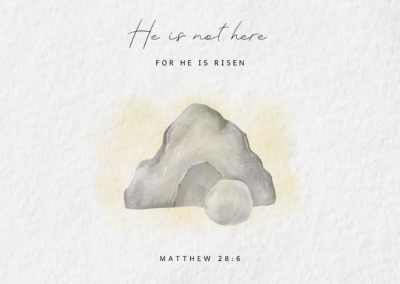Alan Cameron, Legal Scholar, LLM (Jurisprudence), CFP, MNZFG
I am an independent Christian legal scholar with a particular interest in the philosophy of law. I was a founding member of the Wellington Centre for Christian Studies based at Victoria University, and previously a member of the Foundation for Christian Studies and Association for Christian Scholarship (New Zealand). Currrently, I am helping with organization of an online series of webinars associated with the All of Life Redeemed Christian higher education initiative that originated in the United Kingdom. Closely associated with that recent development I have led the formation of an online group studying a Christian philosophy of law (Dooyeweerd). As a Certified Feldenkrais® Practitioner in the field of somatic (body) education I use movement with groups and individual clients to improve overall bodily functioning.
Nicola asked me to write this piece because we are both convinced that healing involves the intersection of science and faith. Jesus healed, often by touch, and he healed even those born blind. And healing has always been and continues to be a practice which is wider than our traditional Western medicine, for all its power and the great good it has done in the last few centuries.
The integration of science with faith and other disciplines often happens by serendipity. In this case as I stumbled over the Feldenkrais Method® in the course of the search for an answer to my crippling migraine headaches. From the moment I encountered the Feldenkrais Method®as a student in weekly movement classes I was struck by the compatibility of this learning method with the perspective underlying the philosophy of law which had shaped my approach to research and teaching in the discipline of law. There were two notable shared features. They both had a holistic view of the human person and both were based on an interdisciplinary approach to science that supported their holistic understanding of the human person.
Moshe Feldenkrais (1904-1984) Doctor of Science (Physics), inventor, cartographer and judo exponent, was brought up in a Hasidic Jewish religious community in the Ukraine.[1] Like many others with a Jewish upbringing who ended up emigrating from Europe, his religious upbringing was accompanied by a life-long interest in scientific learning, but without maintaining an active religious faith commitment to Hasidic Judaism. This made me take notice because in my Christian faith I have been very influenced byHerman Dooyeweerd (1894-1977), a Dutch, neo-Calvinist philosopher,[2] who was also very strongly attracted to scientific explanations of the world. For him science encompassed all the disciplines of higher education, including not only the “natural” sciences but all of the “social” sciences including his own specialist legal discipline of law.
Dooyeweerd’s theory of the human body
Although Dooyeweerd never realised one of his scholarly projects to develop a fully-fledged scientific account of the human person, the main lines of such an account were expressed in 32 “theses” that were to be the basis of a fully worked-out “philosophical anthropology.”[3]A central tenet of his approach was that a biblically-based view of the human person should radically break with dualistic “scholastic” theological approaches. In his view this had never been achieved, notwithstanding the Reformation’s break with Roman Catholicism.
Dooyeweerd’s non-dualistic view of the person was that humans are composed of a complex unity of diverse interconnected functions (functional aspects or modes of functioning) arranged in four different types of “individuality structures” and concentrated in the “heart” as the religious centre of the human being who is created in the image of God. The four “enkaptically interlaced” structures in ascending order of increasing complexity are:
1. A structure with a distinct physico-chemical qualification subject to the laws of physics;
2. A biotically qualified structure of living cells that is distinct from the physical;
3. A “psychic or instinctive” “feeling” functionally-qualified-structure which is bound into the preceding biotic and physically qualified structures, and
4. The highest functional structure that is (“enkaptically”) bound up with all of the “earlier” three is the act-structure, referring to the distinctive structural type that relates to human actions or acts.
These can be summarized as acknowledging that humans obey the rules of physics, and are also sensate biological creatures, but that we have another level, that of agency, which is interconnected with all the lower levels. According to Dooyeweerd, human acts emanate from the “soul or spirit”, or the “heart” out of which flows everything a person does. (Proverbs 4:23 NIV) He described the heart as the religious concentration-point of all human functions. The structures are not “parts” of a whole but intertwined bodily structural types that in their “enkaptic interwinements” comprise the body as a total whole. At the foundation of the interconnected structures of the body are the functional aspects. These are not merely human modes of functioning, but universal cosmic aspects because every thing, event, process, and living being functions in these creationally given, interconnected modal aspects. In his general philosophical systematics he identified fifteen irreducible aspects of reality whereby earlier aspects provide the foundation for later aspects. The first is the aspect of discrete quantity (numerical) followed by the spatial (continuous extension), kinematic (movement), physical (energy-effect), biotic (organic life), psychical/sensory, logical/analytical, historical (cultural-formative), linguistic (symbolic/sign), social, economic, aesthetic, jural/juridical, ethical and faith aspect.
When I became a “student”, and later trained to be a practitioner in the Feldenkrais Method® of somatic learning, I was struck by the similarities between Dooyeweerd’s holistic, functional-structural view of the human person and Feldenkrais’s integrated functional view of the human being. The similarities was particularly notable in their respective understandings of human “functioning”.
Feldenkrais and the human body
The aim of the Feldenkrais Method® is to provide a method of learning that enables a person to improve their overall ability to function in life in a way that approaches attainment of their fullest potential – to come to their full “maturity” in a somatic (bodily) way. (Moshe Feldenkrais, Body and Mature Behaviour). The practitioner teaches this in two ways: Awareness Through Movement® group classes comprising orally delivered lessons, and one-to-one, hands on Functional Integration® sessions.
Movementcoupled with sensory“awareness” is the basis of this somatic learning method. Awareness here means paying attention to one’s sensory experience in movement to discover your habitual bodily patterns. They might include habits that inhibit realisation of a person’s potential in all of their activities and which are a significant contributor to a wide range of personal functional problems. They may include issues directly related to bio-mechanical functional patterns, but also to a wide range of habitual patterns of functioning – for example, habitual visualpatterns that are implicated in limitation of the range of movement of the head, shoulders, arms, pelvis, legs, etc., and actions such as breathing.
Movement is used as the prime means of teaching in this method. But it achieves its aim by bringing conscious analyticalattention to the interconnections of patterns of movement with other modes of functioning within the body that are always involved in a wide range of common human activities. This heightened bodily self-awareness helps to identify brain-based habitual patterns embedded in the nervous system that contribute to difficulties encountered in carrying out actions and activities.
This neuro-plasticity approach to somatic learning is premised on the total rejection of any dualistic notion of a human person as comprised of a body and a mind. Similar to Dooyeweerd’s conception of the human being, Feldenkrais’s conception of the human being is functional-structural whereby all modes in which human function in concrete acts of life are interconnected (much as all the structures Dooyeweerd outlines are interconnected also). In my training, I was taught how to direct my thinking (analytical function) to my sensory experience of bodily sensations and emotions based in the nervous system. That heightened awareness included not only my and others’ movement patterns but increased spatial awareness of how the laws of physics (e.g gravity) operate through the skeleton and muscles in way that is detectable in the sensory experience of the body founded in the biologyof the body. Practitioners of his method realise that, although somatic learning is rooted in all the “lower” functional modes that Dooyeweerd identified as the numerical, spatial, kinematic, physical, biotic, and sensory/psychical aspect, total human functioning involves those substratum functional aspects being intimately connected to the higher functions of thinking (and consciousness), the cultural formative (self-formation), lingual (language) and social aspects. The method also pays attention to the economy and aesthetics of (“elegant”) movement in human actions.
The Feldenkrais Method® and the science on which it is based does not purport to be founded in a specifically Christian conception of the human body such as found in Dooyeweerd. However, the holistic functional-modal and science-based understanding of the human body which they both advocate provides a sound basis for implementing an approach to somatic learning that expresses the two greatest religious injunctions of Jesus: to love God with your whole self, and to love your neighbour as you love yourself. (Mark 12:30-31) I regard both my academic work and my somatic educational practice as ways of obeying those commandments.
For a recent analysis of the Feldenkrais Method see the popular book, Norman Doidge, The Brain’s Way of Healing, (Penguin, 2016), chapter 5.
Alan Cameron
LLM, Certified Feldenkrais® Practitioner (CFP)
[1]Mark Reese, Moshe Feldenkrais: A Life in Movement vol. 1, esp. Ch 1: Eastern European Roots, and Kaetz, Making Connections: Hasidic Roots and Resonance in the Teachings of Moshe Feldenkrais, (2007) River Publishing Centre
[2]See Marcel Verburg’s intellectual biography, Herman Dooyeweerd: The Life and Work of a Christian Philosopher, (2015) Paideia Press
[3]The Theory of Man: Thirty Two Propositions on Anthropology



